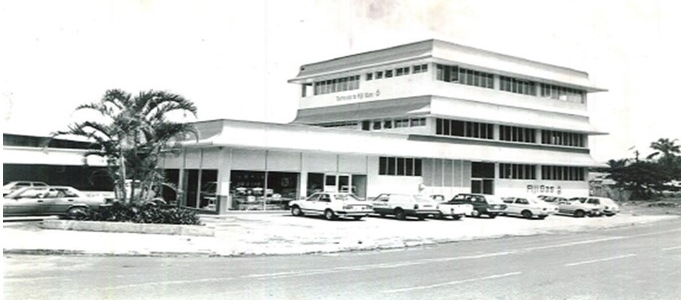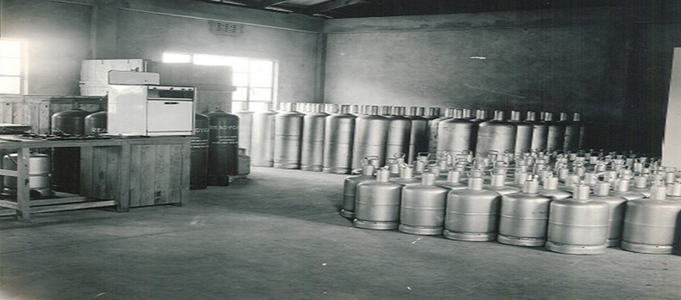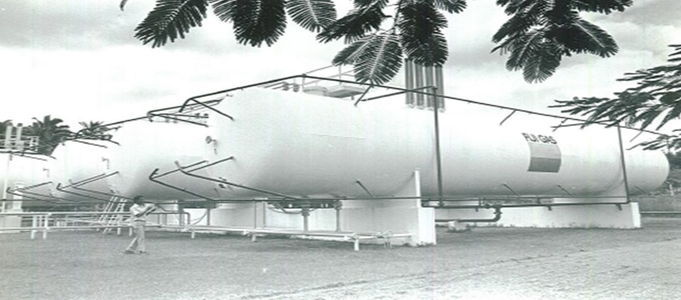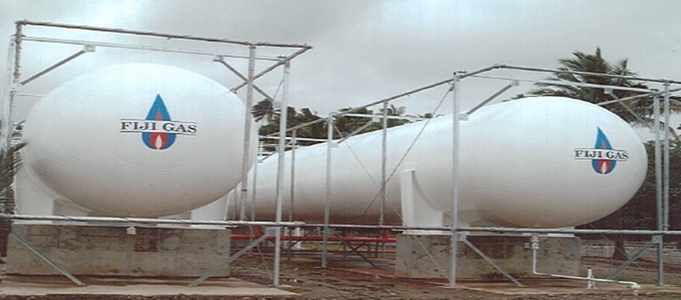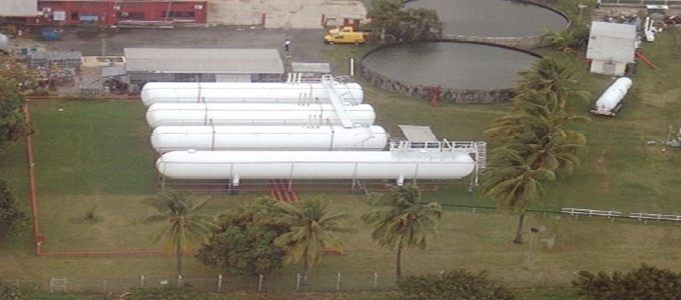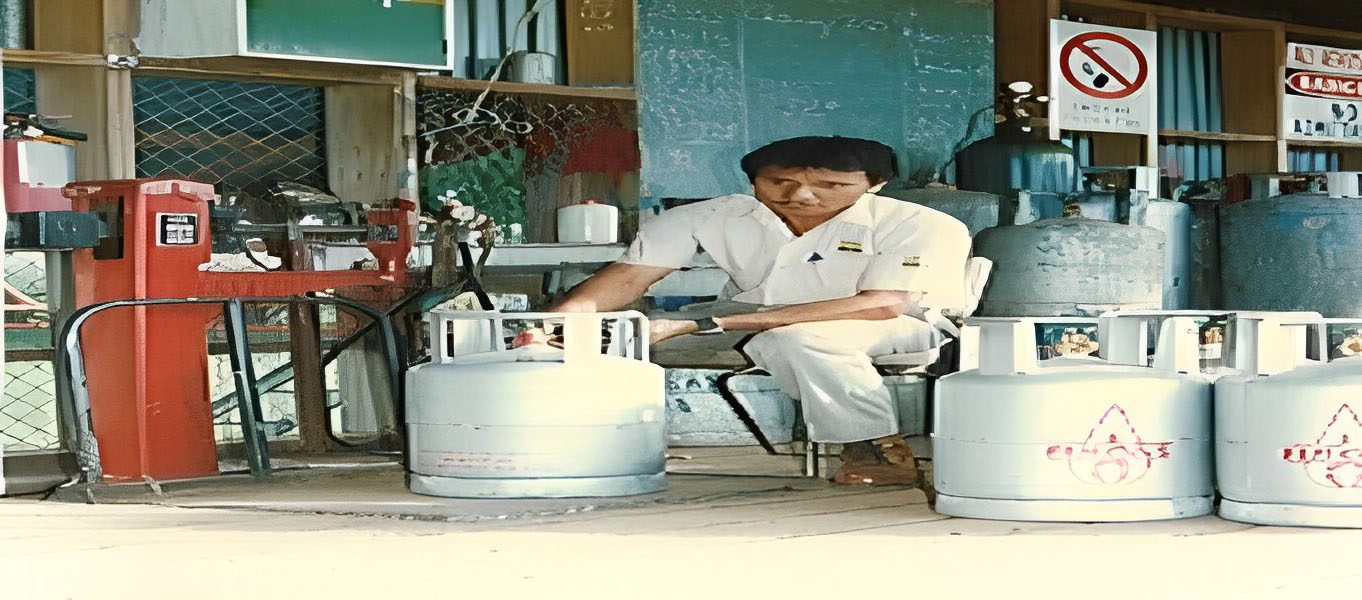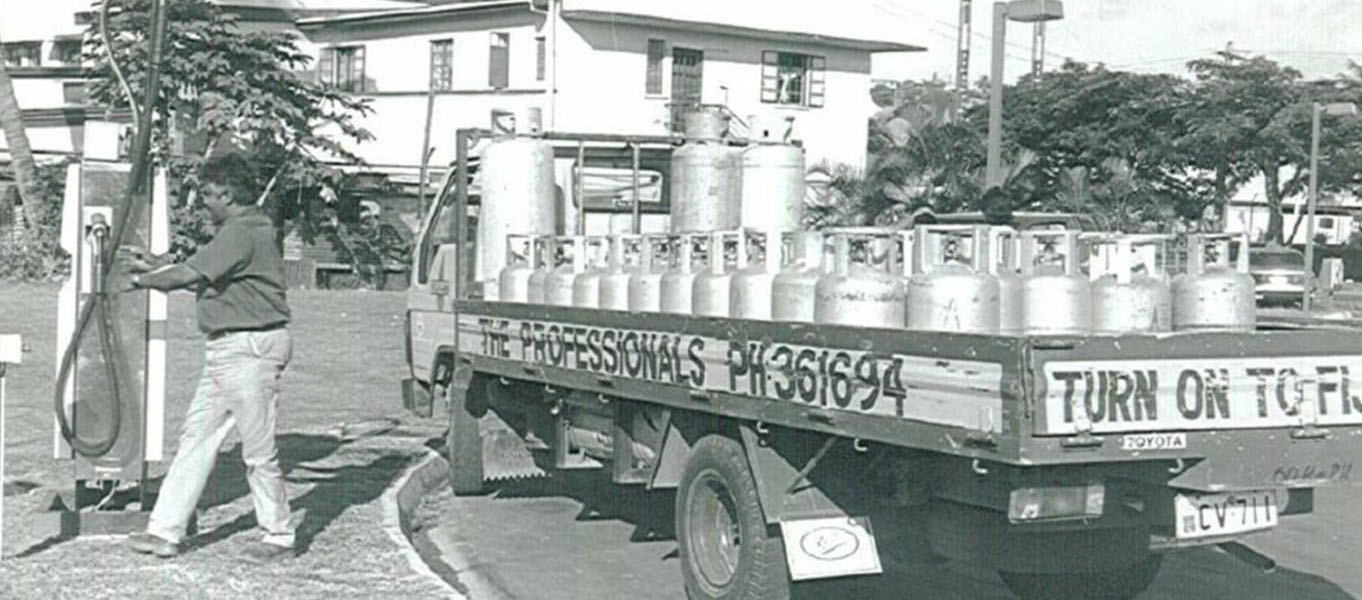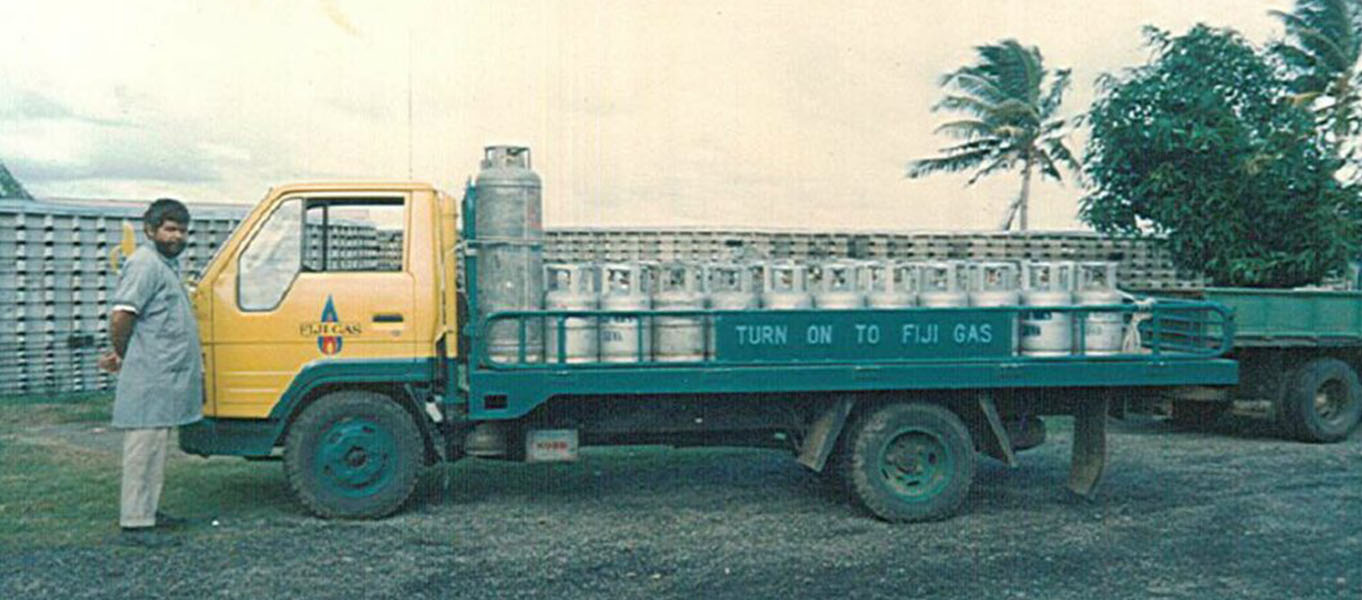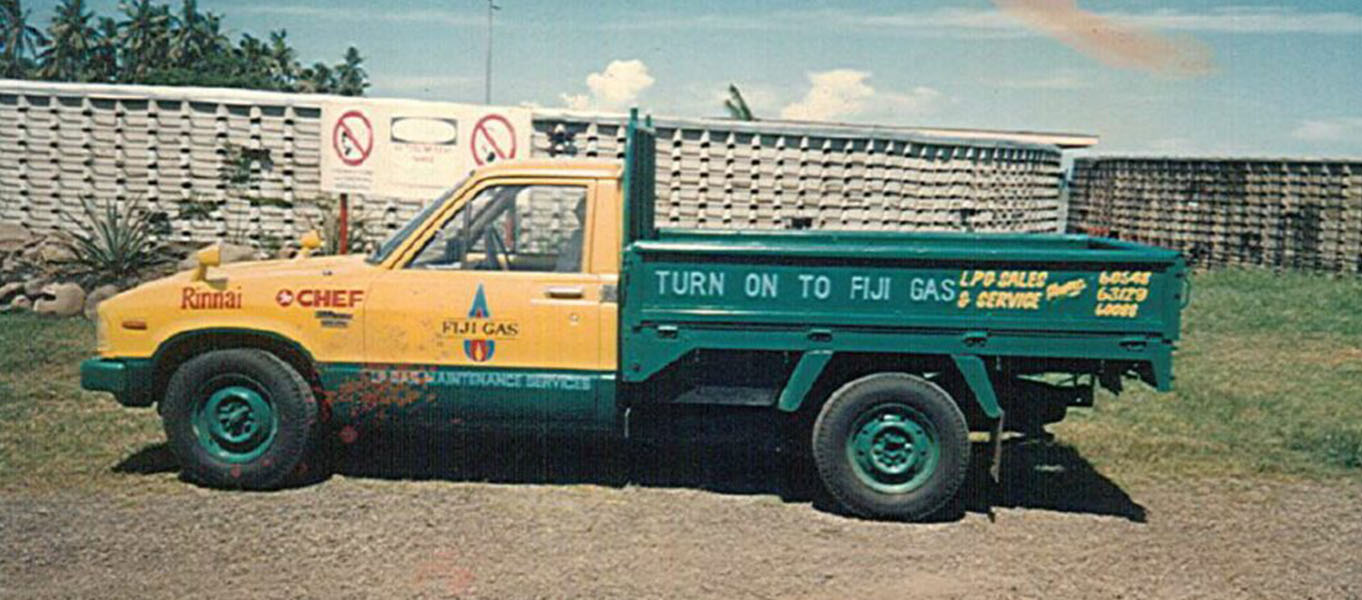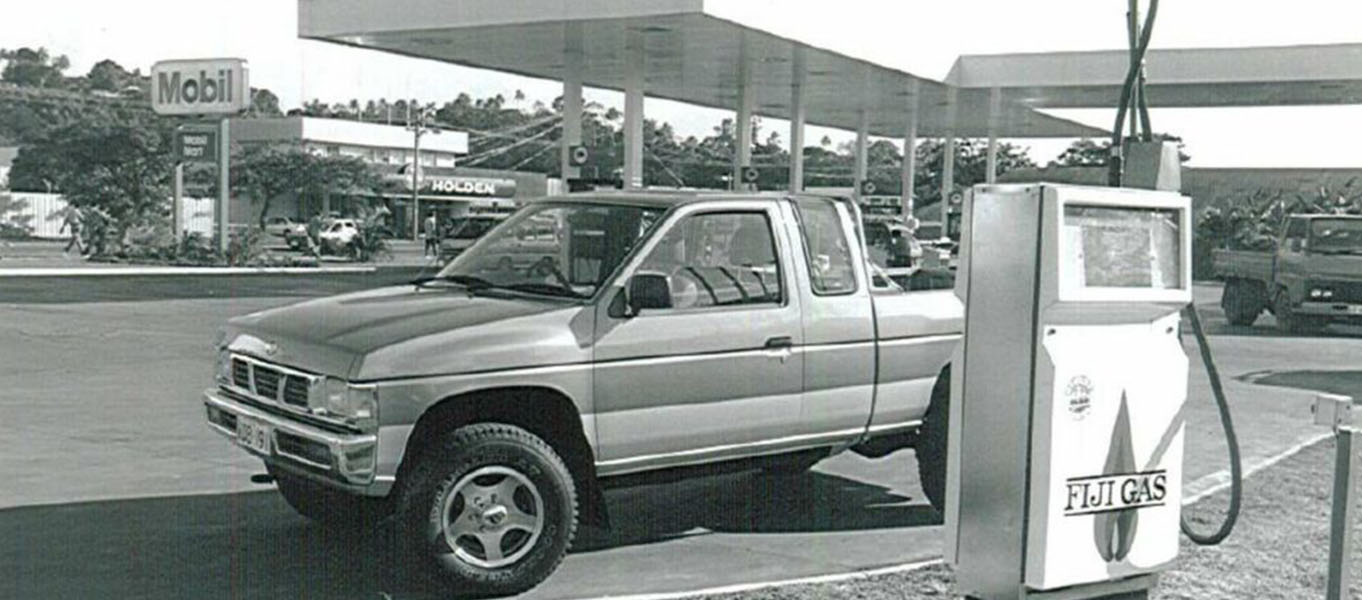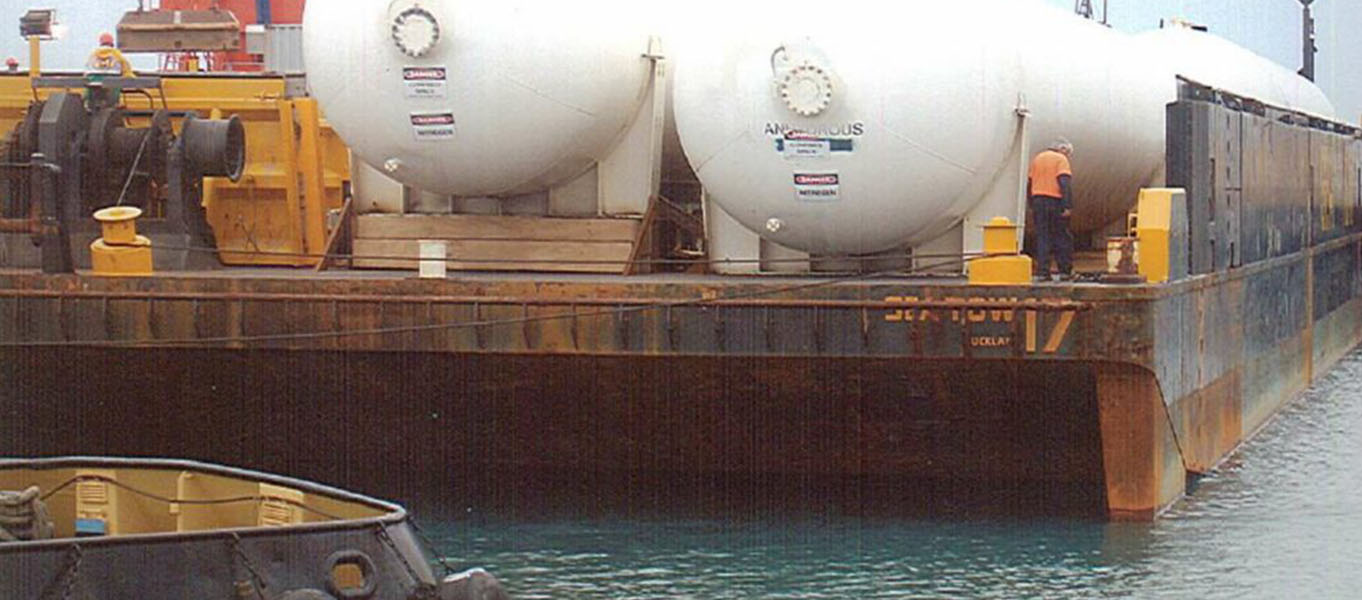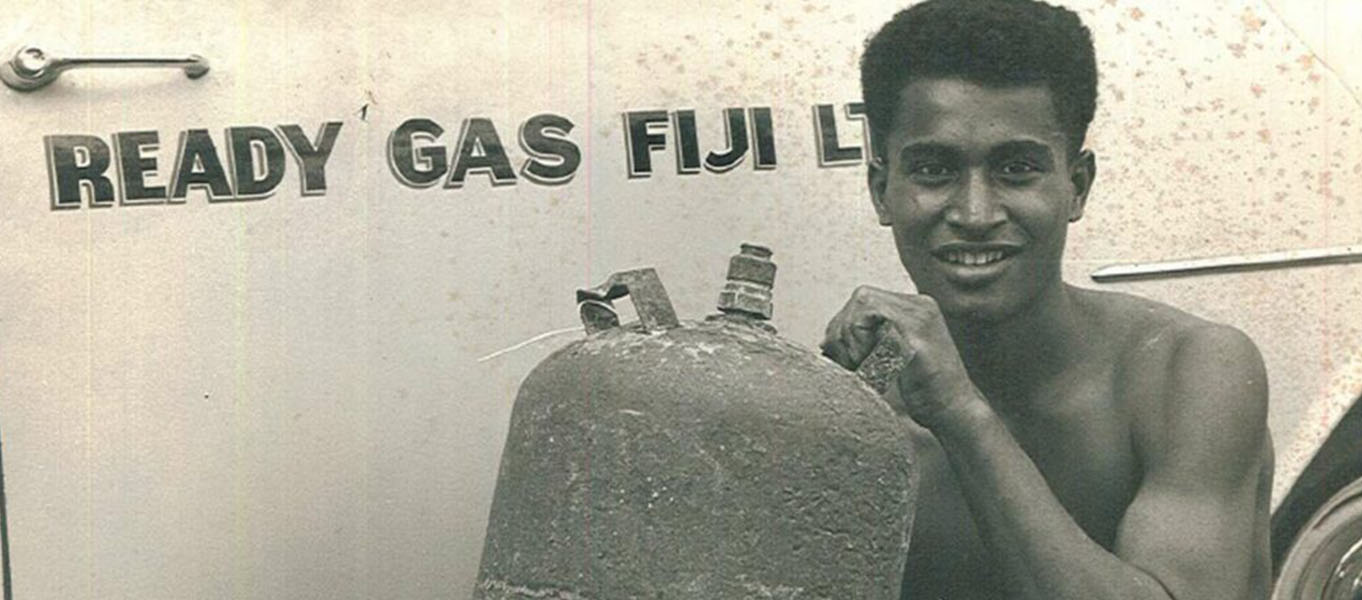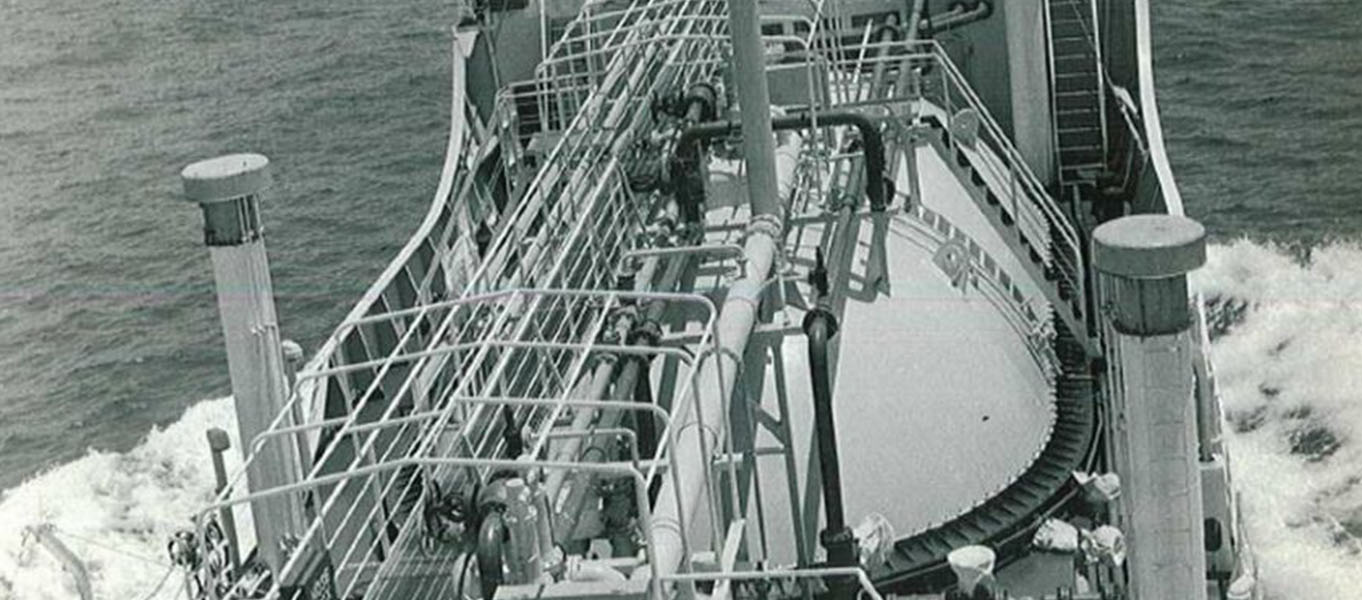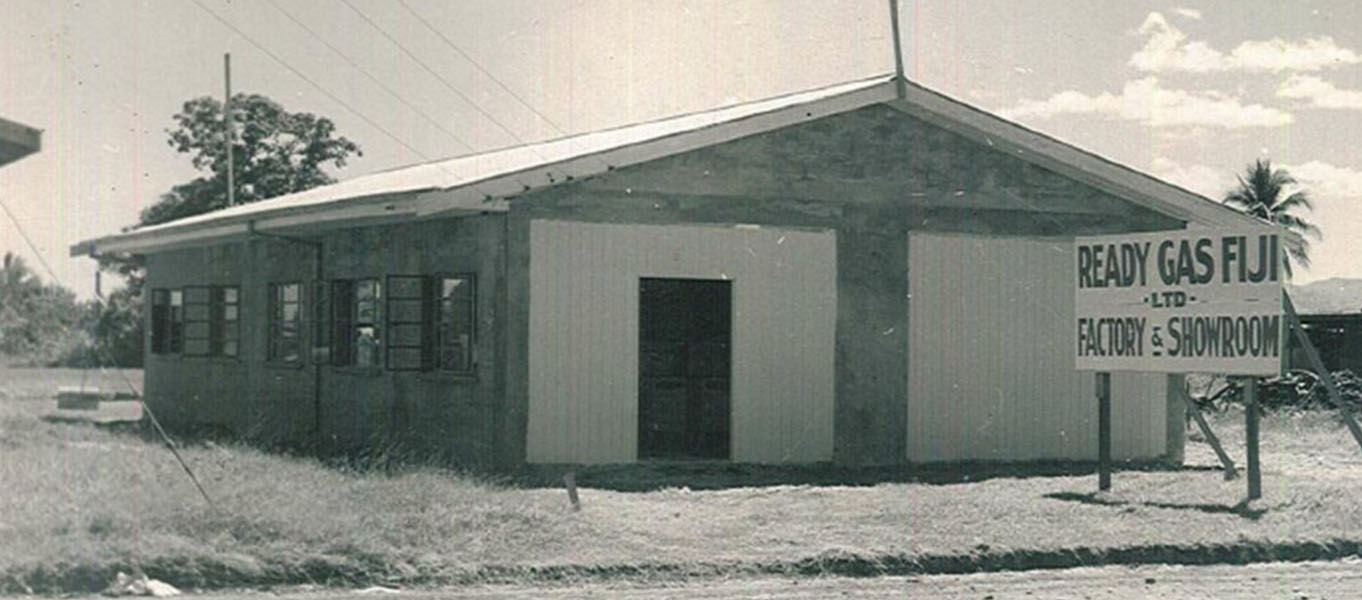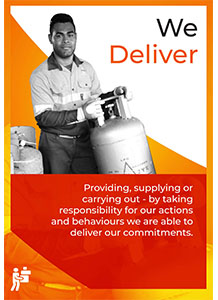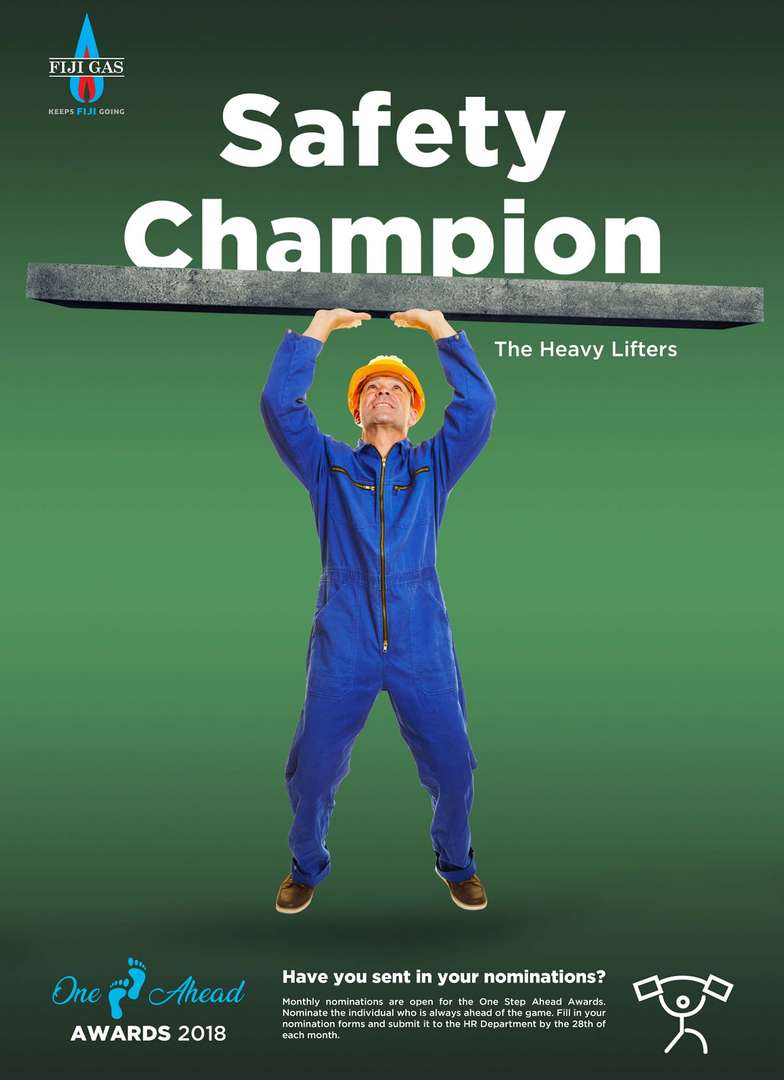From its humble beginnings over 65 years ago, Fiji Gas has grown into a leading energy company in Fiji. Today, it employs over 200 people across five locations nationwide.
The people behind the flame are committed to providing clean, reliable fuel for Fiji. While the company is deeply rooted in Fiji and serves the nation with pride, it draws on a diverse mix of local and international expertise to ensure exceptional service.
Fiji Gas places a strong emphasis on developing its team’s skills to successfully manage a major energy company. This dedication to growth has fostered a culture of excellence, enabling the company to nurture internal talent and frequently promote from within.
Fiji Gas also takes pride in being a workplace where employees feel valued and supported. Many team members have been with the company for over 20 years, a testament to the fulfilling and positive work environment.
With experienced staff focused on supporting customers and ensuring a steady supply of LPG, Fiji Gas combines the strength of its extensive resources with a personalized, local approach. This ensures your LPG needs are met seamlessly, helping to keep your business running smoothly.
Board of Directors
Our board of directors brings a wealth of experience in many different businesses, financial and other key areas. The quality of our board is fundamental to the growth and success of our company.
Senior Management
Fiji Gas management has a wide range of experiences in various disciples which enables the company to accomplish success and strengthen its commitment to achieve its goals of growth and profitability, thereby benefitting the company, investors, customers and the community.
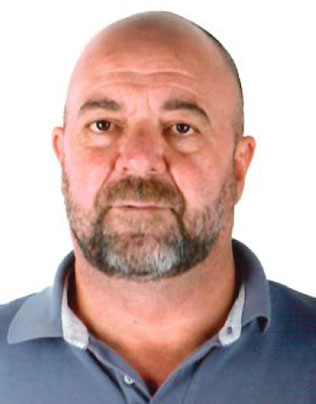
Mark Long
Chief Executive Officer

Vinish Singh
Chief Financial Officer

George Inia
Information, Communications & Technology Manager

Karen Sorby
Human Resource Manager

Fesaitu Kamoe
Health Safety Environment & Community Manager

Abdul Ali
National Operations
Manager
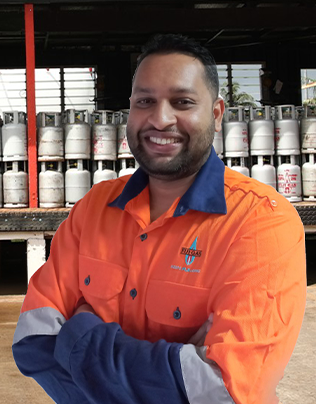
Sonal Reddy
National Sales & Marketing Manager
Vision and the Beginnings
The Chief Inspecting Engineer at the Colonial Sugar Refinery Company brought a blowtorch to Fiji. It was powered by Liquefied Petroleum Gas (LPG). He thought the idea of gas in portable containers was a good one. Fiji Gas can trace its roots to this very humble beginning. With three other expatriate colleagues he registered the Ready Gas (Fiji) Limited and a business was born.
In September 1956 the WLD Harvie organisation, an early shareholder, took over the running of the business with Sir Hugh Hall Ragg as chairman and director and Mr Roger Probert as its Company Secretary. The early years were a struggle as LPG was an unknown source of fuel and people were suspicious of this new technology and its use in the home. The company needed to find a way to get used to cooking with gas and to see the benefits. A major breakthrough came when Ready Gas donated gas stoves to many schools in Ba and Lautoka. The stoves were used in home economic classes and students convinced their parents that gas was the best way to cook.
Finding a consistent gas supply was another major problem the fledgling company faced. The first supplies came from Indonesia but this proved erratic as did a supply from California. The LPG industry in Australia was getting started but in the early years it did not prove to be reliable source of competitively priced gas.
International Partnerships
Mobil Australia
It was not until 1964 when Mobil Oil Australia built a 160-tonne bulk tank that Gas supply worries became a thing of the past. As part of the ten year supply deal, Mobil not only bought all the cylinders and tanks from the Ready Gas but they also bought the company name, Ready Gas (Fiji). The Company became the Fiji Gas Company Limited. The Company name was further changed in 2004 to Fiji Gas Limited. Roger Probert recalled he didn’t know whether the ten year deal with Mobil was a ‘wise move’ as it meant Mobil now owned all tanks and cylinders. The Fiji Gas Company only owned the service of taking gas to the customers. The deal was signed and as Probert said it gave the company money. It also coincided with the increasing development of the tourism industry and a consequent increase in sales volumes. The Gas Supply Company (A wholly owned subsidiary of Boral Limited of Australia)
In 1972 it was becoming apparent that the 10 year contract with Mobil was unlikely to be renewed. As a result Roger Probert started to look for new partners. In May of that year he met with Eric Neal of the Gas Supply Company who was looking to expand their operations in the Pacific. The negotiations culminated in the Gas Supply Company taking a 50% stake in Fiji Gas.
Under the Mobil agreement Fiji Gas only handled deliveries. To move on with Boral they needed to build their own bulk terminals in Suva and the West. The major concern was having the bulk storage site in Lautoka ready to accept the gas from the first Boral gas tanker. They had only three months to reclaim the land, build the filling station, and install the tanks and the water system. They succeeded and the terminal was opened by the Minister for Lands, Ratu Josua Toganivalu, on 3rd December 1973.
In another joint venture with Boral, Fiji Gas invested in the ‘Fiji Gas’. She was an LPG ocean going tanker with a capacity of 500 tonnes. This was later increased to 850 tonnes. Since then Boral have invested in a further two tankers. The three ships supplied gas into ocean terminal across the South Pacific.
Origin Energy
Boral Australia decided to split its company into two companies, energy and non-energy. This saw the birth of Origin Energy in March 2000. On its creation Origin Energy became the biggest shareholder in Fiji Gas.
The close links between Origin and Fiji Gas continue to this day. There are no regulations for the Gas industry in Fiji and Fiji Gas operates to Australian and other international standards in all its operations. Fiji Gas is regularly audited for compliance by engineers from Origin Energy.
Terminals and Infrastructure
Fiji Gas built their first ocean gas terminals in 1973, one in Suva and one in Lautoka. Under the 10 year Mobil contract they had no need for terminals and bulk storage, However when the company went into partnership with Boral they needed terminals. An Australian company, Norman J Hurll, led the construction of both terminals. They were both built with 3 x 150 tonne tanks. Fiji Gas wanted to have such a high capacity to ensure they could always fulfil their customers’ requirements.
Malau was chosen as the location for the Labasa terminal. It was open for business in November of 1981 and it led to strong growth in sales on the island of Vanua Levu. An office was opened in Labasa Town in the same year. The demand along the Coral Coast resulted in the building of the Sigatoka terminal in 1992 and a cylinder filling station was constructed in Savusavu in 1993.
In 2007 Fiji Gas increased its capacity significantly when it installed 5 x 250 tonne tanks. 2 In its Wailada terminal and 3 in Lautoka. The fire fighting capabilities and other safety equipment is continuously being upgraded by Fiji Gas to ensure the safety of the terminals and the people who work in them.
Similarly Fiji Gas’s delivery trucks and tankers are being renewed annually to provide increased safety standards. In September and October of 2015 all the cylinder trucks were updated with a new railing system and quick release bars to support the delivery teams. The design and rebuild of these trucks was done by Fiji Gas staff.
Leading The Way
Fiji Gas is Fiji’s largest and most trusted company in the LPG market in Fiji. We are committed to delivering market leading performances, delivering value to our customers, creating a rewarding workplace for our people and respecting the rights and interests of the communities in which we operate. We are:
- A locally owned company with shares by Fijian Holdings, Unit Trust of Fiji, Fiji National Provident Fund and a number of families in Fiji, and Origin Energy Australia as an international shareholder.
- Large retailer of internal brand gas appliances from Rheem Hot Water, Rinnai Appliances, Moffat Commercial Appliances and Hobart Manufacturing.
- Committed to delivering market leading performances, delivering value to our customers, creating a rewarding workplace for our people and respecting the rights and interests of the communities in which we operate.
Fiji Gas Providing LPG Supply & Expertise
Fiji Gas is the largest supplier of LPG across Fiji, providing LPG to customers for commercial, industrial, forklift, residential and auto gas markets.
With 60 years of experience in the distributor and retailer of LPG, we are the pioneers of the LPG Industry in Fiji.
- Truly national footprint with 5 terminals and branches nationwide at strategic locations to provide efficient and effective supply points for our customers nationwide.
- Our LPG specialists who have an understanding of LPG and its applications in the industry, giving you the confidence that you’re dealing with professionals with the right level of knowledge and skills backed by a company with years of experience in LPG supply.
- We make it our business to understand our customers, anticipate your energy needs and deliver the best LPG solution that suits you.
LPG Experts Creating Tailored Solutions
Our team of Sales Representatives and Service Engineers are experienced in all aspects of supplying LPG to business customers. We:
Visit you personally to discuss your LPG needs
- Our team of sales representatives and service engineers offer product knowledge and expertise to identify your specific requirements, identify risks and opportunities relating to LPG supply and provide you with a tailored solution for your business.
Offer a wide range of solutions
- We understand the importance of LPG for any business and provide you with a wide range of solutions for your business that include:
- Onsite storage facilities
- Installation of small and large tanks with engineering teams optimizing safety and efficient supply
- Project management and installation of metered LPG networks
- Delivery by exchange cylinder or tanker fill scheduled runs
- Reviews of supply and installation
- Ongoing maintenance of Fiji Gas equipment
- Dedicated business development teams to mange larger contracts, pricing and reviews
Excellence In Delivery And Safety
Our aim is to deliver consistent service that is right and safe for your business. We strive to make all our deliveries in full and on time. We provide:
Reliable distribution across Fiji
- We have the largest and most modern fleet of road tankers and delivery trucks, delivering LPG to agents, bulk customers and residential customers. Our services include scheduled deliveries of various sizes.
Distribution networks set up to service you
- Our operations are further strengthened by our network of Authorized Agents who service customers directly with the sale of portable gas cylinders. This means our product is available in many convenient locations and through various outlets like supermarkets, service stations, neighborhood stores and many more.
Safe practices and instructions
- In supplying LPG, we always comply with required safety guidelines including best safety standards.
NATIONAL FOOTPRINT
Fiji Gas has a national footprint with 5 terminals and branches across Viti Levu and Vanua Levu at strategic locations to provide efficient and effective supply points for our customers nationwide.
We have the collective holding capacity of over 2350 tonnes.
- Should a natural disaster hinder access from and to or between major towns, our multiple sites allow us to cater to affected areas efficiently
Distribution Fleet
Fiji Gas has a large number of LPG road tankers including semi-trailers and rigid tankers for ease of transportation via the Fiji road networks.
There is also a large number of cylinder delivery trucks to cater for the Agents and Residential cylinder exchange programs covering most of Viti Levu and Vanua Levu.
- Our services include scheduled deliveries of various sizes.
Home Delivery Service
Our Cylinder drivers and authorized Distributors deliver LPG straight to your door.
- Simply call 3454 from your mobile and order your gas today 😊
Distribution Networks to service you
Our operations are further strengthened by our network of Authorized Agents who service customers directly with the sale of portable gas cylinders.
- This means our product is available in many convenient locations and through various outlets like supermarkets, service stations, neighborhood stores and many more.
Our Commitments
Fiji Gas commitments define the outcomes that we strive to achieve for key stakeholders:
- Delivering market leading performance for shareholders by identifying, developing and operating value creating businesses across the energy supply chain.
- Delivering value to customers by developing and procuring competitive sources of energy and related products and services that better meet customers’ energy needs.
- Creating a rewarding workplace for employees by encouraging personal development, recognising good performance, valuing teamwork and fostering equality of opportunity.
- Respecting the rights and interest of the communities in which we operate by working safely and being mindful of, and attentive to, the environmental and social impact of the resources, products and services we use or provide to others.
Our Principles
Fiji Gas commitments define the outcomes that we strive to achieve for key stakeholders:
- Delivering market leading performance for shareholders by identifying, developing and operating value creating businesses across the energy supply chain.
- Delivering value to customers by developing and procuring competitive sources of energy and related products and services that better meet customers’ energy needs.
- Creating a rewarding workplace for employees by encouraging personal development, recognising good performance, valuing teamwork and fostering equality of opportunity.
- Respecting the rights and interest of the communities in which we operate by working safely and being mindful of, and attentive to, the environmental and social impact of the resources, products and services we use or provide to others.
Our Values
Fiji Gas commitments define the outcomes that we strive to achieve for key stakeholders:
- Delivering market leading performance for shareholders by identifying, developing and operating value creating businesses across the energy supply chain.
- Delivering value to customers by developing and procuring competitive sources of energy and related products and services that better meet customers’ energy needs.
- Creating a rewarding workplace for employees by encouraging personal development, recognising good performance, valuing teamwork and fostering equality of opportunity.
- Respecting the rights and interest of the communities in which we operate by working safely and being mindful of, and attentive to, the environmental and social impact of the resources, products and services we use or provide to others.


